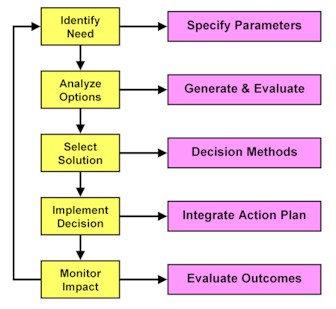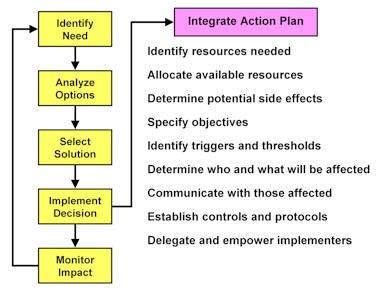|
Decision Making
Systems
05 April 2011
You make decisions everyday
in your life – choices about what to do, make, or buy; when and which way to go
to get from one place to another; how to best achieve your needs and dreams,
overcome your problems, and meet your obligations. Life is full of choices, and
often you do not even consciously realize how many decisions you’re making.
Making decisions and solving
problems is a large part of event management, and a skill that any event
organizer must master. And like your everyday decisions, you might not realize
the scope and nature of the decisions you need to make in order to bring an
event to life and achieve the expectations surrounding it. Decision making for
events also varies from making personal decisions in the scope and nature of the
potential impact of those decisions. They can affect hundreds or thousands of
people and involve vast amounts of money. This is why the event organizer must
understand and employ effective decision making systems.
|
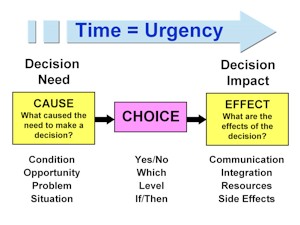 |
One must understand
the nature of a decision. First there is a need to make a decision
(cause), then the decision is made (choice), and finally there is the
impact that decision will have (effect).
The typical types of
decisions are:
Yes/No
(whether, only two alternatives)
Which
(more than two alternatives)
Level
(measurement, quality, or rating scale)
If/Then
(threshold or rule-based)
The amount of time
one has to make a decision can have a significant impact on the way a
decision is made and its effectiveness. |
|
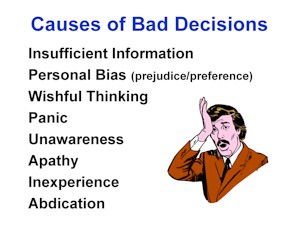 |
Making a decision
based on little or no information, one’s personal preferences or
prejudices, wishful thinking (or wishful listening) or panic are signs
of professional immaturity.
Not recognizing the
need for a decision is due to either ignorance or incompetence. “I
didn’t know” or “I didn’t care” might be excuses but are not acceptable
reasons.
Deciding not to
decide is still a decision; perhaps appropriate or the abdication of
one’s responsibilities. |
Keep in mind that, as a
professional, you are responsible (and sometimes liable) for the decisions you
make, the decisions you failed to make, and the decisions you did not prevent
others from making who did not have the authority to make them.
|
|
This is the system
for making decisions broken down into its separate parts. It may seem
complex and burdensome, but can be accomplished in what seems like the
blink of an eye.
It is an iterative
system that promotes due diligence. It helps one consider the variables
of the cause, choice, and effect facets of a decision, and facilitates
comprehensive and strategic thinking.
Having a structured
system allows one to purposefully move through a process as well as
establish policies and procedural tactics that ensure and improve
quality decision making for an event. |
|
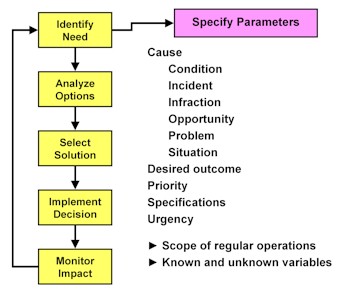 |
Why are you making a
decision? What went into the need to make that decision? What do you
want or need to happen as a result of that decision? How important is
this decision? How quickly must you make it? What factors must be
incorporated into this decision?
Know the Needs.
In the planning
stages of an event you have more time to spend determining the
parameters of a decision. Review the scope and typical variables
associated with this particular event project. Identify what you know
and what you don’t know, or don’t know yet, so you can plan for
contingencies. |
|
 |
The 35 categories of
the EMBOK domains provide a comprehensive framework for approaching your
decision planning. As you go through each category you can determine
both the decisions to be made and the factors that go into these
decisions (see the Speaker
Integration Example).
How many decisions
do you have to make? It depends on the scope and nature of the
particular event project, but it could be anywhere from several hundred
to hundreds of thousands. You NEED a decision making system! |
|
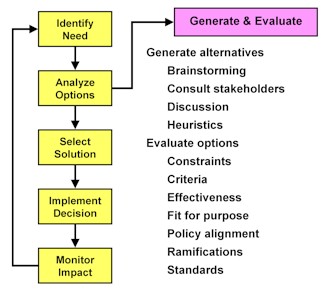 |
Once the need has
been defined, you must generate and evaluate the potential options for
solving the need. This is often done by gathering ideas and information
from others. Sometimes, however, you are limited by access or time, in
which case you probably rely on heuristics – intelligent guesswork based
on experience.
Consider the factors
that affect the capability of an option to achieve a satisfactory
solution. Some factors are pre-established, some are fundamental, and
some are limitations. Often there isn’t one single best solution and you
have to weigh and measure the choices. |
|
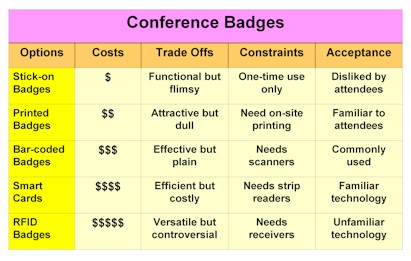 |
For example, this
chart shows the costs, trade offs, constraints, and acceptance factors
that would go into a decision about what type of conference badge to use
for an upcoming event.
At first glance one
might say that stick-on or RFID badges would be the last choice, but
that doesn’t take into account the nature of the event. For some budget
events the stick-on badge would be the best choice; an RFID badge could
be the most appropriate for a high-tech event. |
|
|
You need to know how
and by whom the decision will be made. Many of these methods use
quantitative or qualitative criteria that determine choices, for example
first come/first served for assigning exhibit spaces or vicinity quality
for site selection.
Determine who has
the authority to make the decision and if there are any conditions
placed on that authority. It might be the event organizer, the event
host or owner, a committee, or a panel of judges.
Contingency plans
need to have the if-then-when thresholds or triggers clearly defined.
|
|
|
In order to
effectively implement the decision you need to recognize and integrate
the factors that affect the action plan. These include the resources
(time, money, personnel, space, etc.) and their use, as well as the
potential side effects of that use.
Communication,
clarity of expectations, and controls will be imperative, particularly
when the cause or effects of a decision involve numerous people and
activities. A single decision can create waves that spread throughout an
event project and its operation.
No change is a small change. |
|
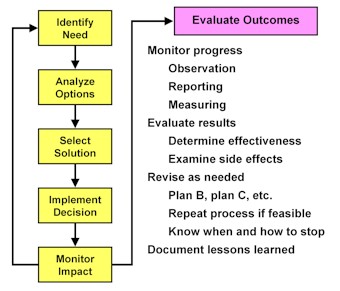 |
It has been said
that no decision is ever “final” (although it might not be changed
during an event project). Things change. Things don’t always turn out
the way you thought they would. Stuff happens.
You have to keep
your eye on how things are going, and if a decision is not delivering
the solution you expected, you might have to change course. This is why
contingency plans are made. This is also why the decision structure has
a loop back up to the start of the process.
Having thought
through the decision needs should prepare you to face the challenges
that inevitably occur during an event project. Make certain you learn
from them. |
|




